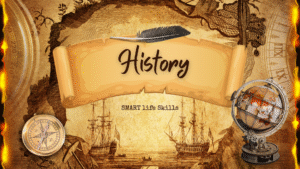In today’s rapidly evolving business landscape, organisations face a multitude of challenges and opportunities. To thrive, they must possess a nuanced understanding of the internal and external factors that shape their environment and impact performance. These factors influence not only the strategic direction of an organisation but also its day-to-day operations and long-term viability. The distinction between internal factors—those within an organisation’s control—and external factors—those outside its direct influence—is fundamental to effective strategic planning and organisational management.
1.0 Understanding Internal Factors
Internal factors refer to elements within an organisation’s control that influence its strengths and weaknesses. These include:
- Human resources
- Organisational culture
- Leadership and management
- Technological capabilities
- Physical and financial resources
These elements are often the foundation of an organisation’s core competencies and competitive advantage (Barney, 1991).
Example: Apple Inc.
Apple’s ability to innovate is deeply embedded in its internal culture of design excellence, cross-functional collaboration, and world-class R&D. Its strong internal brand, tight supply chain control, and leadership under figures like Steve Jobs and Tim Cook have enabled it to stay ahead of competitors in product development and marketing.
A robust organisational culture, like Apple’s, can foster employee engagement, enhance performance, and drive innovation (Schein, 2010). In contrast, a toxic culture can hinder decision-making, cause high turnover, and damage brand reputation.
Human Capital and Capability Development
According to Armstrong and Taylor (2020), strategic Human Resource Management (HRM) plays a vital role in nurturing talent, building skills, and aligning workforce behaviours with organisational goals. Firms that invest in training, diversity, and leadership development are better equipped to respond to external challenges.
Financial and Technological Resources
An organisation’s financial health also determines its ability to invest, expand, or weather downturns. Similarly, technological capabilities influence operational efficiency and innovation. For instance, Amazon’s dominance in logistics and AI-driven customer analytics stems largely from internal investment in technology infrastructure.
2.0 Exploring External Factors
External factors are elements that exist outside an organisation’s immediate control yet significantly influence its strategic direction, performance, and survival. These factors can create both opportunities for growth and innovation, as well as threats that can hinder operations or competitiveness. To systematically analyse these influences, businesses often use frameworks like PESTEL (Political, Economic, Social, Technological, Environmental analysis and Legal) and Porter’s Five Forces (Johnson, Scholes & Whittington, 2017). These tools help organisations assess the broader macro-environment and the intensity of competition within their industry.
For example, political changes such as new trade policies or government regulations can affect market access, while economic factors like inflation or unemployment influence consumer spending patterns. Social trends, including demographic shifts and changing lifestyles, may alter demand for products or services. Technological advancements like AI and digital platforms can both disrupt traditional industries and create new avenues for innovation. environmental concerns drive sustainability agendas and ethical sourcing and Legal frameworks impact compliance requirements.
Porter’s model adds depth by focusing on the competitive environment, examining how the threat of new entrants, substitute products, bargaining power of customers and suppliers, and industry rivalry impact profitability. Understanding these external dynamics is essential for crafting resilient, future-oriented strategies.
3.0 The Interplay Between Internal and External Factors
Though internal and external factors can be examined separately, they are most powerful when understood in relation. Strategic tools like the SWOT and TOWS matrix (Weihrich, 1982) allow organisations to map internal strengths and weaknesses against external opportunities and threats to craft responsive strategies.
Example: Netflix
Netflix recognised early the external trend towards streaming and leveraged its internal capabilities in data analytics and content creation to lead the market. Conversely, Blockbuster failed to adapt, exposing its internal rigidity and poor innovation culture in the face of rapid technological change.
4.0 Adapting Strategy to Internal and External Realities
Strategic planning must continuously integrate insights from both internal audits and external environmental scans. Strategic agility—the ability to pivot quickly and effectively—is increasingly critical in volatile markets.
Scenario: Brexit
British companies faced uncertainties due to new trade regulations, labour mobility restrictions, and currency fluctuations. Those with resilient internal structures, such as flexible supply chains and decentralised operations, adjusted more successfully than those reliant on EU cross-border efficiencies.
Sustainability as an External Pressure
The rise in environmental awareness and regulatory pressure has made sustainability an external imperative. However, it requires internal transformation: reducing emissions, redesigning products, and shifting culture. Companies like Unilever have embedded sustainability into their core values and internal operations to align with external stakeholder expectations (Unilever, 2023).
5.0 Organisational Size and Structure: Influence on Internal-External Dynamics
The size and structure of an organisation affect how internal and external factors are managed.
- Small firms may be more agile but vulnerable to external shocks.
- Multinationals have scale advantages but face complex external environments and regulatory challenges in multiple jurisdictions.
Global firms, for example, must balance local responsiveness with global integration, often requiring a matrix or decentralised structure (Bartlett & Ghoshal, 1989).
A successful organisation must maintain awareness of both its internal environment—resources, culture, and capabilities—and the external environment—market trends, competition, and regulation. These forces are in constant interplay and demand continuous strategic assessment.
As the global business landscape becomes more interconnected, organisational success hinges on the ability to leverage internal strengths, address weaknesses, exploit opportunities, and mitigate threats. Strategic tools such as SWOT, PESTLE, and Porter’s Five Forces enable this analysis, but they must be accompanied by agility, leadership, and innovation.
In an age of disruption—from pandemics to AI—the ability to understand and adapt to internal and external forces is not just important, but existential.
References
Armstrong, M. and Taylor, S. (2020) Armstrong’s Handbook of Human Resource Management Practice. 15th ed. London: Kogan Page.
Barney, J.B. (1991) ‘Firm resources and sustained competitive advantage’, Journal of Management, 17(1), pp. 99–120.
Bartlett, C.A. and Ghoshal, S. (1989) Managing Across Borders: The Transnational Solution. Boston: Harvard Business School Press.
Hill, C.W.L. and Jones, G.R. (2012) Strategic Management: An Integrated Approach. 10th ed. Boston: Cengage Learning.
Johnson, G., Scholes, K. and Whittington, R. (2017) Exploring Strategy: Text and Cases. 11th ed. Harlow: Pearson Education.
Porter, M.E. (2008) ‘The five competitive forces that shape strategy’, Harvard Business Review, 86(1), pp. 78–93.
Schein, E.H. (2010) Organizational Culture and Leadership. 4th ed. San Francisco: Jossey-Bass.
Unilever (2023) Sustainability Performance Overview. Available at: https://www.unilever.com/sustainable-living/ [accessed on: 13.08.2025].
Weihrich, H. (1982) ‘The TOWS matrix — A tool for situational analysis’, Long Range Planning, 15(2), pp. 54–66.









